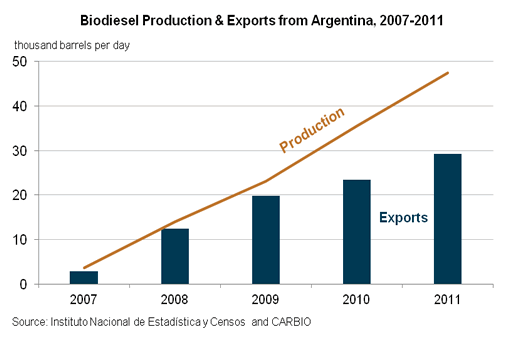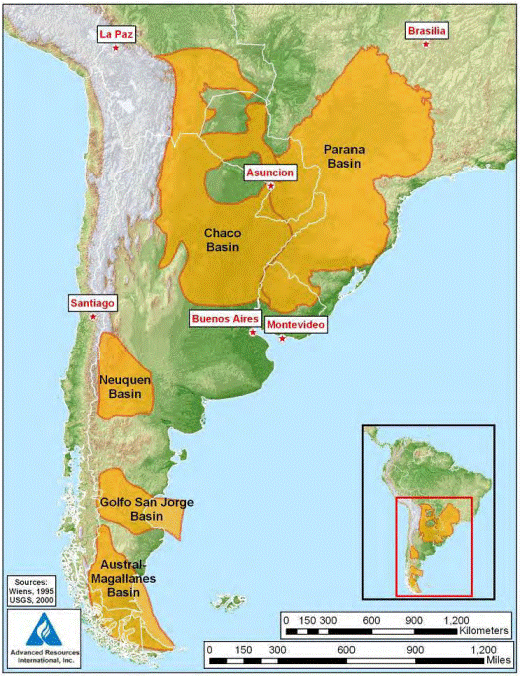From 2GreenEnergy Intern Louis de Saint Phalle — Country in Focus: Argentina

Part of the reasons behind the current electricity generation mix can be traced back to the country’s economic crisis in the late 1990s. Argentina adopted irrationally designed energy subsidies in order to stimulate the economy, which resulted in power overconsumption and ended up favoring the wealthiest sectors (i.e. oil and gas). Since the re-nationalization of the country’s largest oil company in 2012, alternative energy has not been on the priority list for Argentina’s leaders.
In 2012, Argentina ranked first in natural gas production among South American countries and fourth in petroleum production. However, those production levels have since declined, and Argentina is starting to rely heavily on energy imports. The map below shows where shale gas reserves are located: the three largest gas-producing basins account for roughly 85% of the country’s natural gas production.
With regards to renewable energy, Argentina uses a small share of hydropower for electricity while other Renewables are mainly used for biofuels. In fact, Argentina was ranked 4th in 2013 global biodiesel production with an annual production of 2.3 billion liters. This was a 10% decrease from 2012 during which anti-dumping sanctions were imposed by the EU trade commission.

There has been a lot of recent interest in other forms of renewable energy recently. Argentina hopes to mirror Germany’s power policies due to the latter’s enormous impact on Argentinean policy, and has worked with the German embassy to help fund the FOVISEE solar power project. However, despite foreign support and existing feed-in-tariff policies covering all renewable sources since 2006, local decision-makers seem relatively uninterested in solar projects.
Furthermore, financing projects is a huge challenge at the moment. Micro-lending is not prevalent and there are very limited financing lines available. Many of the small and medium-sized projects need to rely on the local bond market and trusts.
Argentina could definitely be a major player in sustainability and alternative energy in the future, especially for small-scale solar projects and solar thermal/heating/cooling. Quality of life has improved through access to electricity (97% electrification rate) and the future could hold much more. Wind could be fantastic there as well. The small-scale solar and solar thermal markets are small but growing steadily. We will see.

